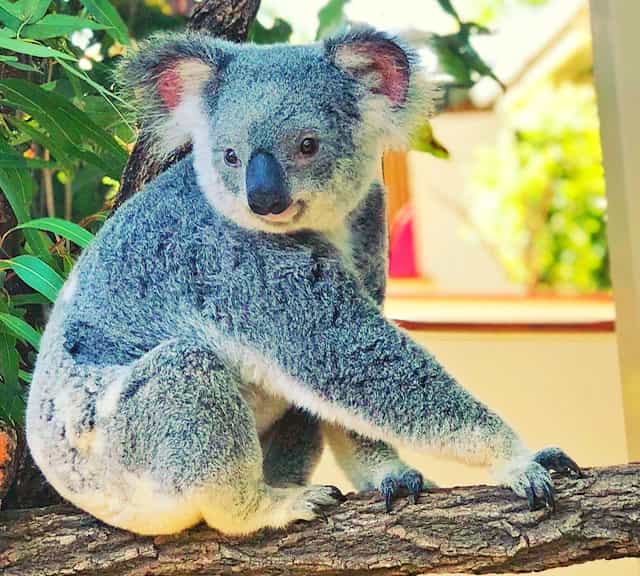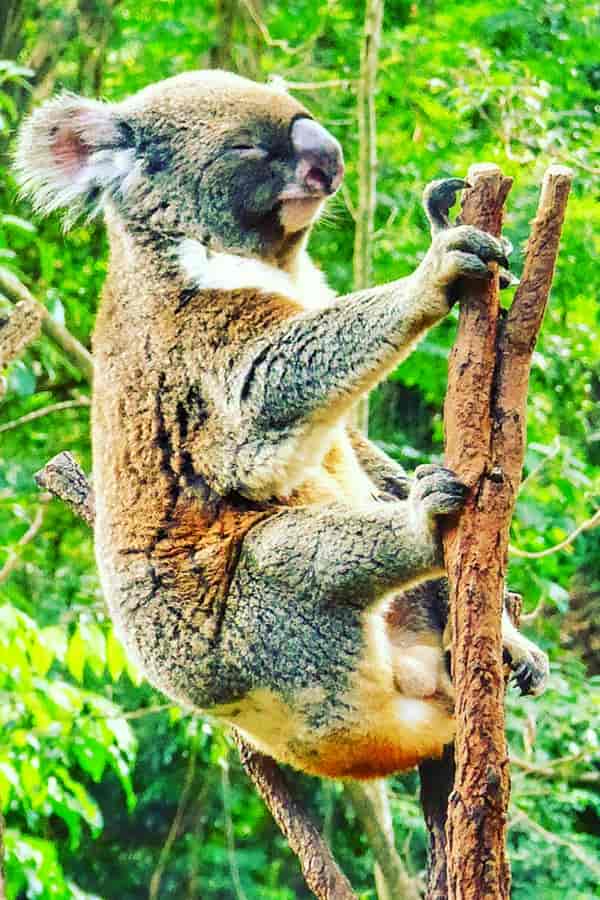Origin of Marsupials
The origin of the Marsupials can be traced back to more than 100 million years ago. According to the paleontologists, the Marsupial mammals originated almost 125 million years ago from the Eurasian region. This origin of the Marsupials mammals also remains in parallel to the rise of the Placental mammals who also rose almost 125 million years ago. Furthermore; they also originated from the Eurasian region.
The origin of the Marsupial mammals can be traced back to more than 125 million years ago at the Eurasian region.
All of these claims are based upon the findings of the fossils of Marsupials from China's Liaoning province, where they found a small skeleton of the Sinodelphys Szalyayi. That Marsupial was believed to be the size of a chipmunk. Later; the same team of paleontologists also discovered skeletons of Placental mammals within the region which led them to conclude that both Marsupials and Placental mammals rose from the Eurasian region. 125 million years ago Eurasia was part of the super continent named as Laurasia.

Onwards; both Marsupial and Placental mammals spread throughout the world. Marsupials first thrived at the North America which was part of the Laurasia and later entered into another super continent named as the Gondwana and it included the South America, Arabia, Africa, Australia and Antarctica. It is believed that Marsupials initially thrived at the South American regions.
Marsupials mammals first entered the North America and then to the South America which was part of another super continent named as the Gondwana.
The lack of Marsupial fossils from Africa and Arabia indicates that they did not entered these regions. About 80 million years ago, a huge asteroid struck the earth which defined new dimensions for the future formation of the earth. Africa and Arabia started to separate from the Gondwana which only had Australia, South America and Antarctica connected to it.

In one of their last historical journeys the Marsupials finally entered the Australian continent which was bonded with South America and Australia. This happened about 55 million years ago. Australia at that time was believed to be the home to the rain forests and this factors specifically would have attracted the Marsupials to enter the Australian region.
Marsupials finally entered the Australian continent some 55 million years ago while 45 to 35 million years ago Australia started to drift away from the South American and the Antarctica.
About 45 to 35 million years ago, the Australia and Antarctica finally started to drift away from the South America which made the final divide between the Australian Marsupials and the South American Marsupials. The Australian Marsupials started to thrive on the rain forests for millions of years until the final Icehouse phase arrived and it transformed the Marsupials' habitat within the Australian region.

The Icehouse phase started at the Australian continent some 15 million years ago. The rain forests succumbed to this ice house phase and there was a drought like habitat throughout the continent of Australia. Only the drought tolerant plantation survived on the Australian continent the likes of which included the Eucalyptus and many other.
All the current Marsupial mammals on the Australian continent have originated from the Marsupials which adapted to the Ice House Phase some 15 million years ago.
The surviving animals amazingly adjusted to these drought tolerant plantation of the Icehouse phase and finally started to thrive throughout the region. All the present day Marsupial mammals at the Australian continent have their origin connected to those surviving members of the Icehouse phase.

Therefore; the current Australian Marsupial mammals' origin can be traced back to the 4 key phases of their lives. First phase involves the rise of the Marsupials in the Eurasian region, second phase is their arrival at the Gondwana and thriving on the South American rain forests and the third phase is their arrival at the Australian continent.
Four key phases define the origin of the Australian Marsupials i.e., rise at the Eurasia, migration towards Gondwana, arrival at the Australian continent and adaptation to the Icehouse phase.
Finally; the fourth and last phase is their adaptation to the Icehouse phase at the Australian continent. The origin of the Australian Marsupials shows a beautiful journey of these mammals over the span of more than 125 million years ago.

Lastly; how is it possible to differentiate the fossils of the Marsupials with the other mammals like the Placental mammals? The differentiation lies within the skeletal structures of the Marsupial mammals which are marginally different than the Placental mammals. The skeletons of the Marsupial animals usually differ from the Placental mammals on the basis of their premolars and molars.
The Marsupial animals have a unique skeletal structure that is quite different from the Placental mammals. For example the Marsupial mammals have non-replacing first 2 premolars out of 3 premolars and have 4 molars in total.
The first two Premolars of the Marsupials are non-replacing, plus on aggregate they have 3 premolars and 4 molars while the Placental mammals have 4 premolars and 3 molars. This is one of the most easiest of methods for the paleontologists to differentiate between the Marsupials and the Placental mammals. Moreover; the brain area for the Marsupials is rather smaller in the skull as compared to the Placental mammals.

Liger Articles
Marsupials vs. Placental Mammals
Koalas are most popular animals in Australia
Koalas are more popular as compared to Kangaroos
Koalas and their Dominant Nose
Button Shaped Fascinating Eyes of the Koalas
Core Recognizing Features of Koalas
Koalas are the largest tree climbing Mammals in Australia - Koalas as Arboreal
Sizes of Koalas from Queensland, Australia
Sizes of Koalas from Australia's Victorian Origin
Difference between Queensland and Victorian Koalas
Average Weights of Male Koalas
Weighing Male vs Female Koalas
Male Koalas have Loudest of voice among all Australian Mammals
Origin of Koalas & their Evolution
Koalas Population Increased at the end of 20th century
Historical Evolution of the Koalas - A Physical Perspective
Koalas and their Aboriginal and Native Names
It Took 10 years for Aboriginal Australians to Spot and Recognize Koalas
Koalas Live Hardest and Toughest Lives Among all animals
Koalas Tooth Decay through its Abrasive Diet
Koalas Diet is Fully Poisonous and Toxic
Koalas' Food Eucalyptus has Lower Nutrition
Koalas have Lower Energy Levels
Koalas - When Occasionally Spotted on other Leaves for their Food
Why Koalas drink little or no Water?
Koalas & their Advanced Digestive Mechanisms
Why Koalas Sleep more than 20 Hours a Day?
Koalas Lack Energy and Strength
Koala's Tooth from Growth till Tooth Decay
Young Koalas are Better Chewers as Compared to Mature and Elderly Koalas
Why Most Koalas Die of Starvation?
Heat Exhaustion and Heat Strokes among Koalas
Do Koalas lack Intellectual Abilities?
Koalas and their Sense of Smell
Koalas Love Fresh Eucalyptus Leaves as their Food
Koalas' Eucalyptus Leaves' Preferences during summers and Winters
Koalas' Preference for Leaves Having Higher Nitrogen Levels
Koalas Prefer Big Eucalyptus Trees and Love to Stay at Trees' tops.
Koalas Prefer to Live in Areas that have Good Soil and Fertile Lands
Koalas' Per Day Food Consumption
Koalas Food Consumption Depends upon their Body Size
Lactating Female Koalas Consume More Food as Compared to the Normal Female Koalas
Koalas Consume More Food during Winters as Compared to Summers
Female Koalas are very Selective Regarding their Leaf Selection and Food Consumption.
A Baby Koala Joey Lives in her Mother's Pouch for 8 to 9 Months
Gestation Period within Female Koalas
Breeding Behaviors of the Female Koalas
The Size of the Baby Koala Joey at the time of its Birth
Weight of the Baby Koala Joey at the Time of its Birth
At Birth the Baby Koala Joey Travels from Cloaca into their Mother's Pouch
Newborn Koala Joeys have Well-Established Sense of Smell
Koala Joey keeps his Head Inside its Mother's Pouch for 6 Months
Complete Shape and Body Development of the Koala Joey
Pap - The first solid food of the Koala Joeys
When Does Tooth Emerge for Baby Koala Joey?
Aggressive Behavior of Mother Koalas towards their Joeys
Queensland Offers Less Nutritional Values for Koalas
How long does Koalas live? Age of the Koala
Female Koalas Live More than Male Koalas
What is the Average Age of the Male Koala?
Average Ages of the Female Koalas
For How Long a Female Koala can Give Birth to the Koala Joeys?
How many times female Koalas give birth?
Koalas and Australia's Bushfire
Koalas' fur quickly gets rid of rain water
Koalas Resting and Sleeping Postures and Positions during the Hot Summer Seasons
Winter Season and Sleeping Postures of Koalas
Koalas' Urination during Summer and Winter Seasons
Koalas and their Specialized Claws
How does a Koala regulate its Body Temperature?
Food Consumption and Feeding Timings of the Koalas
Koalas Always Prefer Eucalyptus Leaves from the Tree top
How does a Koala Grooms itself?
Koalas' Territories and ranges within Australia's Victorian Areas
Koalas' Territories and Ranges within Australia's Queensland Areas
Behavior of the Alpha Dominant Male Koala
Aggressiveness of Female Koalas
Scent Marking Behavior of the Male Koalas
Mating Strategy of the Male Koalas
Fights and Territorial Encounters of Male Koalas
Sounds and Vocalizations of Male Koalas
Sounds and Vocalization of the Female Koalas
Koalas and their Facial Expressions
Breeding Ages of the Male and Female Koalas
Factors Influencing the Success of Koalas' Fertility Rates
Behavior of the young and adolescent Koala Joey
When Does a Mother Koala Says Goodbye and Leaves the Young Koala Joey?
Playful Behavior of the Young Koala Joeys
Koalas - Mating Season and Mating Months
Koala Informationen, Bilder, Neuigkeit, und Erforschung
Коала - сумчатый млекопитающий